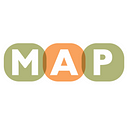EDUCATION & ACTION DURING COVID-19 SERIES
Supporting LGBTQ Foster Youth
Having data to understand the trends that are helping our nation’s most vulnerable children is paramount, especially during a pandemic

The public health threat of COVID-19 has shown us now, more than ever, the importance of mutual aid and community care. As part of our commitment to speed equality and opportunity for all, MAP will be publishing a series of Medium blog posts that advance the conversation around vulnerable communities who may be particularly at risk to the effects of the virus and the economic downturn. In the middle of an unprecedented global pandemic that affects us all, this series will shed light on the particular challenges facing all of our communities, as well as resources from partners and allied organizations to support you through the pandemic.
Having the data to understand the trends, the gaps, and the tools that are helping our nation’s most vulnerable children is paramount, especially during a pandemic when children in foster care are experiencing upheaval and disruption. Yet earlier this week, the Trump Administration released a final rule stripping sexual orientation data collection on foster youth, parents, and guardians, as well as information about Native American children, from the nation’s child welfare reporting database.
The Adoption and Foster Care Analysis and Reporting System (AFCARS) collects case-level information on all children in foster care and those who have been adopted with title IV-E agency involvement. It is an incredibly important database for policymakers, practitioners, and researchers because it provides comprehensive information about children and youth in foster care.
In 2016, the Department of Health and Human Services modernized the system by standardizing reporting requirements and adding new measures that are critical for examining how the child welfare system is serving nearly 700,000 children each year. These included questions focused on what was happening in a child’s family when a child was removed, including exposure to drugs or alcohol; family conflict related to sexual orientation and gender identity; and experiences of homelessness, parental deportation, or human trafficking. The revisions also required agencies to provide information about youth themselves — such as education levels and if they are pregnant or parenting — and required states to provide critical information about Native American children’s engagement with the child welfare system.
Given what we know about the child welfare system and the children and youth who are touched by it, these questions are necessary. For example:
- LGBTQ youth, who comprise 30% of youth living in foster care, experience high rates of homelessness. Many report negative experiences in the child welfare system, including related to their sexual orientation and gender identity.
- Research also shows that LGBTQ children are significantly more likely to be physically abused by their parents, and in the time of COVID-19, that child abuse is increasing during current school closures and stay at home orders.
- Native American children, as well as Black and Latinx children, are overrepresented in the system. And far too many children age out of the system without being reunified with their families or receiving a permanent family placement.

The final rule released this week from the U.S. Department of Health and Human Services eliminates the sexual orientation variable from this national dataset. This will undermine the ability not only to track demographic trends but also to identify gaps in services, ultimately placing youth and prospective parents at continued risk of harassment and discrimination. The rule also eliminates data elements related to the Indian Child Welfare Act, despite universal opposition from the Indian tribes, tribal organizations, and organizations representing tribal interests who submitted comments on the topic. Removing these elements will make it difficult to understand the unique issues that Native children experience related to poor outcomes in state child welfare systems.
From Family Equality Council:
It is outrageous that during National Foster Care Month, HHS is abdicating its statutory responsibilities to promote the safety and well-being of LGBTQ foster youth. States, tribes, and agencies cannot improve care and outcomes for these youth if they do not have data to measure their efforts. This is especially painful at a time when many young people who aged out of foster care without a family, including many LGBTQ youth, are losing student housing and employment due to the COVID-19 crisis.
In June 2019, MAP submitted comments in opposition to changes in the rule because the changes make it impossible to know how the system is serving vulnerable youth and how to make improvements to the care they receive. Especially during a pandemic, adoption and foster care agencies should be equipped with a robust AFCARS data system that allows them to make informed decisions when finding loving and supportive homes for children and youth in need.
Resources
- Family Equality Council’s The Neighborhood: A Virtual Hub for LGBTQ+ Families offers LGBTQ families and those who wish to form them opportunities to connect in this time of social distancing
- The National Indian Child Welfare Association has compiled COVID-19 resources for children and families that are part of Indian child welfare programs.
- Fill out the 2020 Census. Funding of federal programs for foster care, adoption, and child care and development depends on how many people in your area complete the Census.

